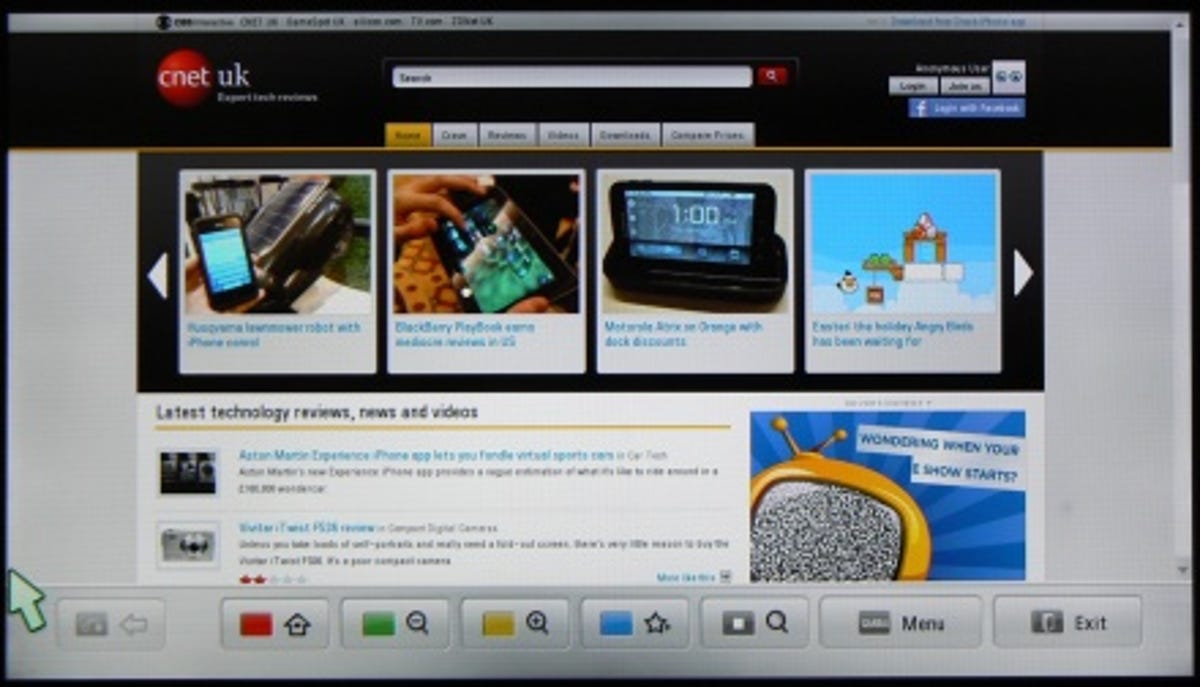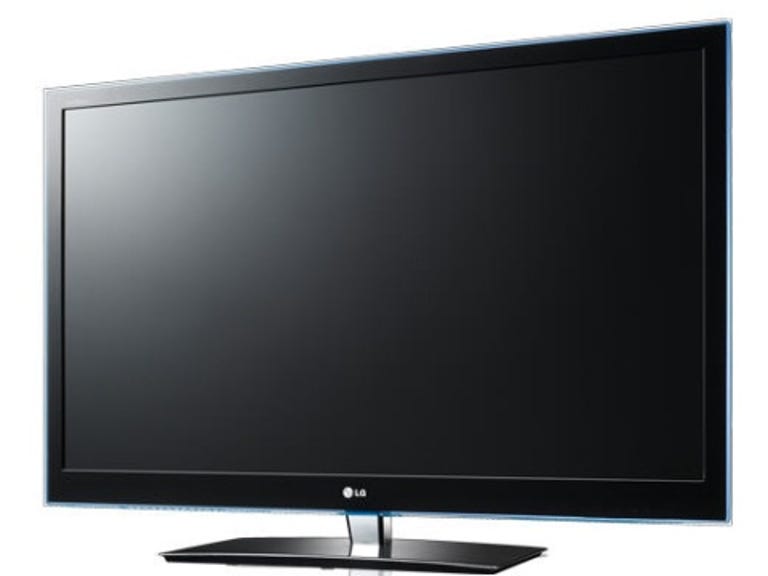 Why You Can Trust CNET
Why You Can Trust CNET LG LW650T (55LW650T) review: LG LW650T (55LW650T)
LG's latest range of 3D TVs come bundled with a whopping seven pairs of 3D glasses, thanks to its cheaper passive method of delivering the tri-dimensional kicks. It's an impressive performer, too.
You might not be particularly fussed about 3D TVs, but manufacturers are desperately pushing the technology. LG is taking a different tack to most by using passive technology on all its 2011 TVs. That means they use cheaper glasses, but provide lower resolution 3D images than active 3D TVs, which use expensive glasses, but deliver Full HD 3D pictures.
The Good
The Bad
The Bottom Line
The 55-inch LG 55LW650T is currently the highest-end set in this new passive 3D range, and costs around £2,000, but comes bundled with seven pairs of 3D glasses -- enough for most families and a few guests. But how does the TV stack up against the active 3D competition?
Unseamly
Despite the hefty price tag, this isn't the sexiest looking telly we've seen from LG. It lacks the seamless one-sheet-of-glass design used on some older LG sets. Instead, like most other manufacturers' TVs, there's a small 3mm or so step between the surface of the display and the screen surround.
Nevertheless, it does have an attractive transparent outer edge that blends beautifully with the rest of the bezel and we're fans of the new, more angular looking pedestal stand.
At 30mm, the screen is very slim for such a large TV. This does mean you have to use small adaptor cables to connect to some of the ports, such as the Scart socket and component inputs. Most people are now likely to hook up their gear via HDMI, however, and LG provides four of these inputs on the left-hand side of the TV.

As with most of today's sets, the 650T has a Freeview HD tuner onboard and LG has also kitted it out with a pair of USB ports. These can be used to play back music, pictures and videos from USB keys or hard drives. We tried it out with a few different formats, including DivX and MKV HD files, and it had no problems playing them back.
You can also stream these formats over a network thanks to the LAN port and the set includes LG's new smart TV platform too. The service offers a pretty broad range of content, including BBC iPlayer, YouTube, Picasa and the AceTrax movie on-demand service. There's even a full Web browser, so you can visit pretty much any site on the Net (although Flash sadly isn't supported).
Passive aggressive
Using passive rather than active 3D sets this TV apart from most of its rivals. The main advantage is passive glasses are much cheaper to produce than active glasses -- they're the ones you usually get at the cinema. The set comes with seven pairs, but you can buy more for around £2 each, compared to the £100 or so you'll pay for a pair of active specs. The glasses are lighter and more comfortable to wear, too, and works with all currently available 3D services, including Sky 3D.
Whereas active sets produce two distinct Full HD 3D images for each eye and then use the active glasses to shutter between them, passive sets instead produce the 3D effect by creating a single image that contains the information for the left and right side pictures. This cuts the real resolution to half that of active sets.
In reality, however, the apparent resolution you see is actually higher and is closer to two thirds of a Full HD picture. Passive also has very little of the 'crosstalk' that you usually get on active LCD sets, for example, and because the passive 3D glasses don't dim the image anywhere near as much, 3D pictures look much brighter.
At a normal viewing distance the 650T's 3D performance is actually quite impressive. You can tell it's not delivering Full HD levels of resolution, but images for the most part remain pretty sharp. More importantly, the images deliver a very impressive sense of depth as they look much more solid than on many active 3D sets that suffer from high levels of crosstalk.
The passive glasses also seem to be easier on your eyes. Partially, at least, this is becuase you don't see flickering from ambient light sources in the room in the same way you do with active glasses.
R-2D-too
There's still a dearth of high-quality 3D content available, so most people are going to spend the vast majority of their time with this TV watching 2D material. Thankfully its 2D performance is also pretty impressive.
Upscaling standard-definition TV channels on a 55-inch screen is always tricky, but the LG does a pretty good job of sharpening up the pictures while keeping noise down to acceptable levels. Movies on Blu-ray also look exceptionally sharp and detailed and the set drums up lush colours and impressively deep black levels.
There are some issues, however. Motion isn't as deftly handled as on some rival sets. With the TruMotion mode turned off you can see some loss in sharpness during faster panning shots, while engaging it adds some slight flickering on the edge of objects here and there. The local dimming isn't perfect either, as bright objects in dark scenes tend to have a slight halo around them.
Conclusion
All in all, though, this is a fine set from LG. It delivers impressive picture quality for day to day 2D viewing and offers a much more affordable way for families to enjoy 3D movies thanks to the low price of the 3D glasses.
Edited by Nick Hide


